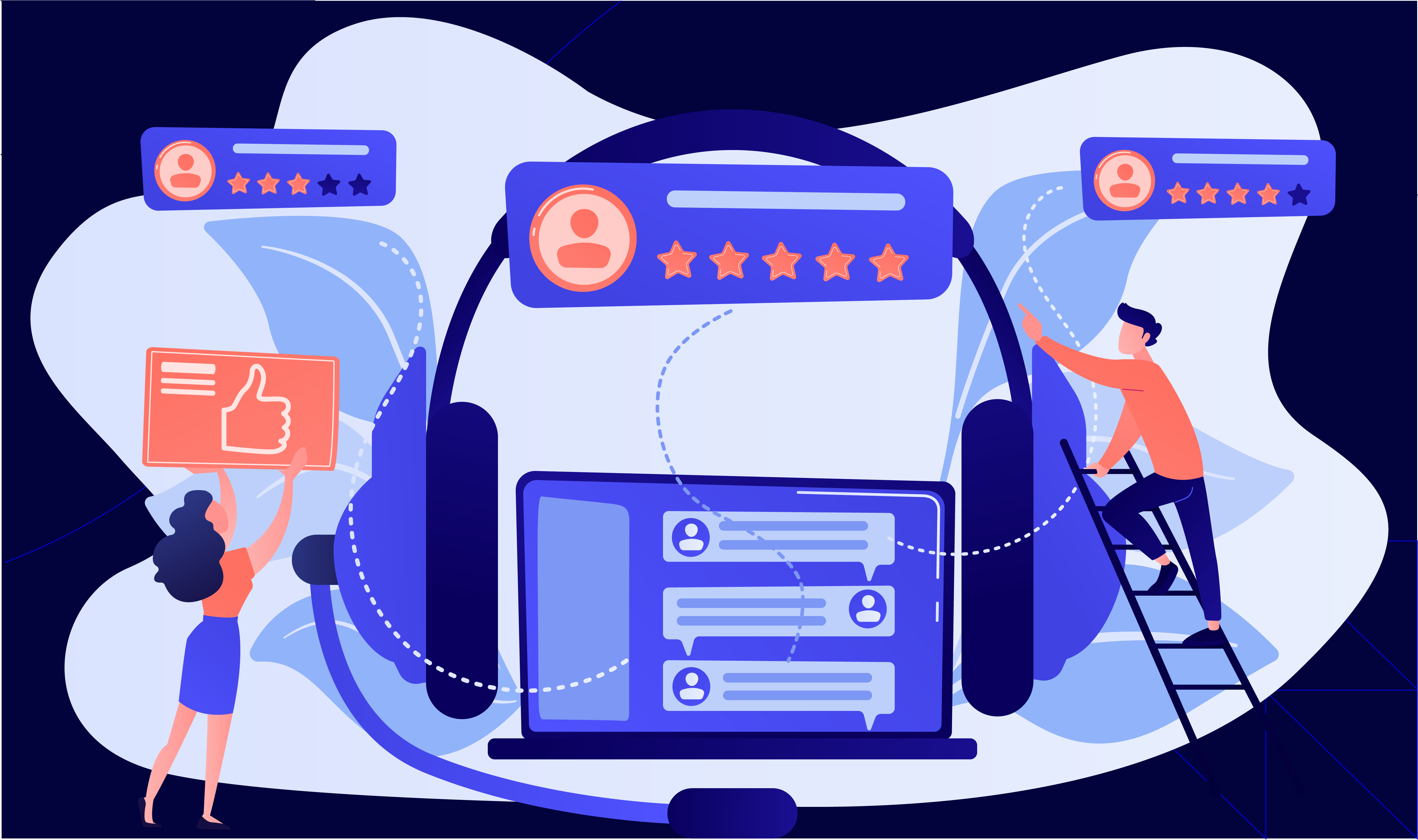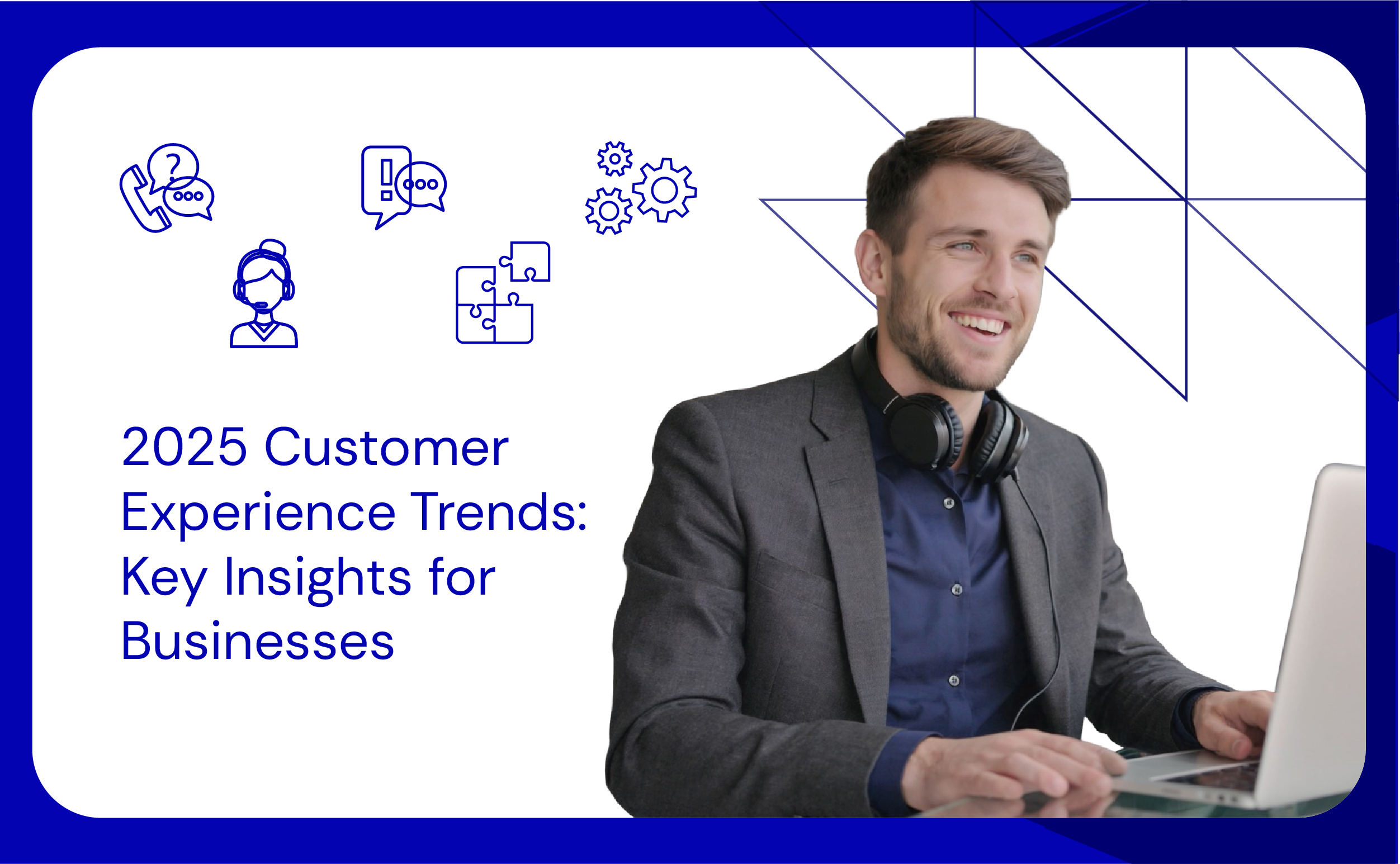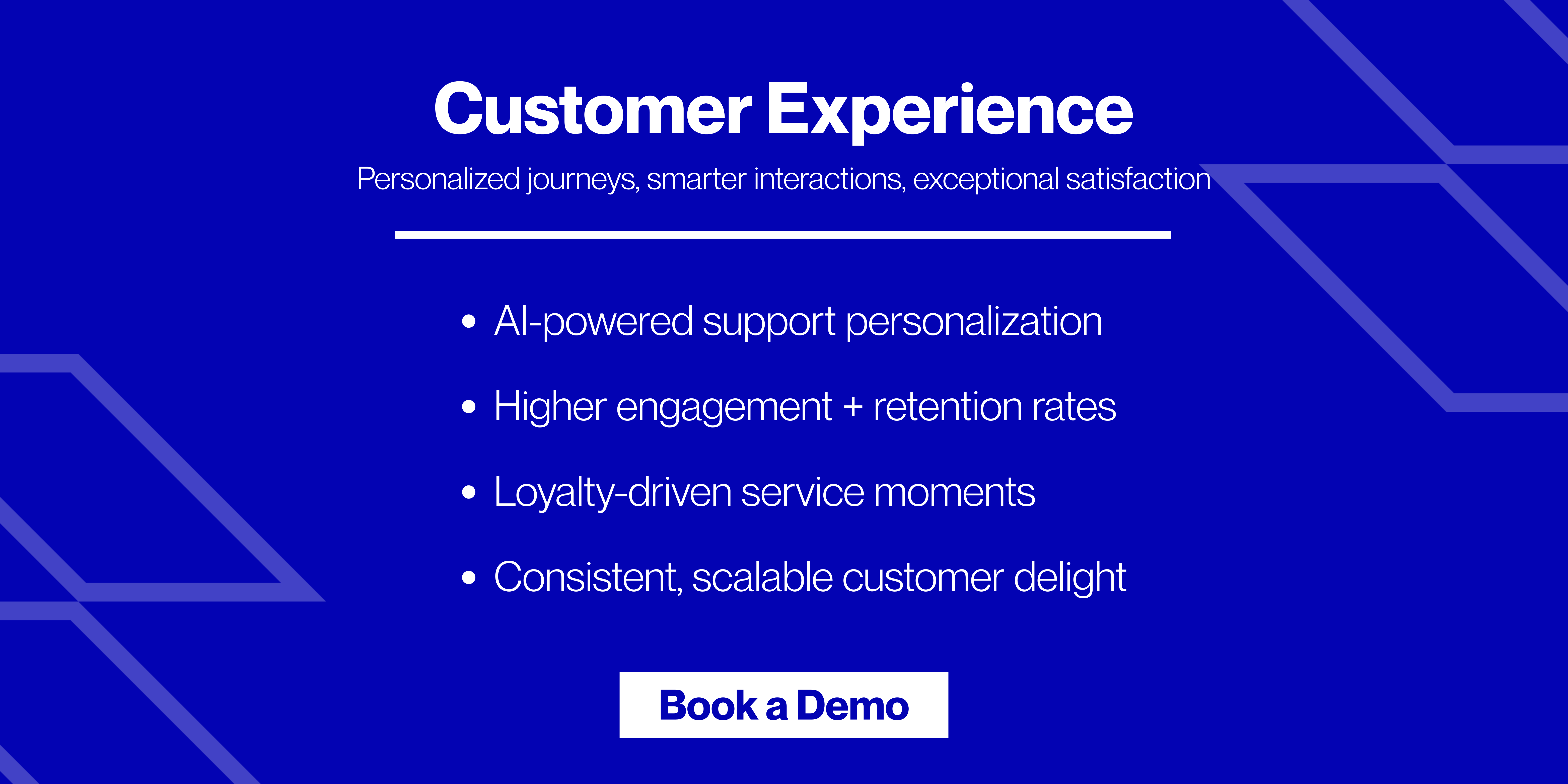The customer experience trends in 2025 focus on hyper-personalisation, omnichannel engagement, omnichannel trends 2025 and strong customer retention. They also point to emerging technologies, like AI, VR/AR, XR and predictive analytics. For consumer brands and D2C companies in the US, UK & Australia, staying ahead of these digital customer experience trends will define competitiveness in 2025.
Currently, the Customer Experience (CX) management market is worth $19.34 billion. The latest CX trends, including predictive customer experience trends for 2025, show that it could reach $70.2 billion by 2032 at an impressive CAGR of 17.20%.
But why is this growth happening? Majorly, that’s because more businesses are using new technologies like:
- Artificial Intelligence (AI) and Machine Learning (ML): Help businesses better understand customers and offer personalised experiences.
- Augmented Reality (AR) and Virtual Reality (VR): Create interactive experiences, like trying on clothes online before buying.
- Natural User Interfaces (NUIs): These include voice assistants and touchless controls that make interactions easier.
- Predictive Analytics: This helps businesses guess what customers might want before they even ask.
This article outlines eight predictive and digital CX trends shaping 2025, including omnichannel trends that CX leaders can’t afford to miss.
8 Customer Experience Trends 2025 You Can’t Miss!

A PwC study shows that 52% of customers switch to competitors after a single poor experience. For CX leaders, the pressure to adapt is real.
For your reference, below are eight emerging cx trends in 2025, you must know:
1. Customer Journey Orchestration
As a business owner, you must realise that customers go through many steps before making a purchase or using a service. These steps form the customer journey. Businesses are using real-time journey mapping and cross-channel coordination to guide customers more smoothly.
How does this work?
-
- Real-Time Journey Mapping
- Businesses study how customers interact with them across different platforms (website, app, store, email, social media).
- This helps companies send the right message at the right moment.
- For example, say a customer is looking at a product on a website but does not buy it. Now, the company can send a reminder or a discount offer.
- Real-Time Journey Mapping
- Cross-Channel Journey Coordination
-
- Businesses connect different channels to improve CX.
- For example, say a customer adds a product to their cart on a mobile app but does not complete the purchase. Now, they might receive:
- An email reminder
- A personalised ad on social media
- A notification when they visit the website again
- This approach makes it easier for customers to complete their purchases without starting over and removes friction and boosts conversions.
Through customer journey orchestration, you can guide customers toward buying a product or using a service without making them feel pressured.
2. Hyper-Personalisation
Modern customers want businesses to understand them and offer experiences accordingly. Now, basic personalisation (like using a customer’s name in an email) is not enough anymore! AI and ML now deliver predictive personalization, recommending products and adjusting digital experiences in real time.
How does this work?
- AI and Machine Learning
- These technologies study customer behaviour.
- They predict what customers might want.
- For example, if someone buys a product online, the system can suggest similar products based on past purchases.
- Real-Time Adjustments
-
-
- Businesses regularly analyse customer activity.
- Based on analysis, they provide recommendations instantly.
- For example, say a customer visits an online store. Now, the website may show them products based on what they have searched for before.
-
- Digital CX trend 2025:
-
- A website or app can change based on who is visiting.
- For example, say a customer often shops for sports gear. Now, they might see sports-related offers as soon as they open the app. If another customer prefers electronics, they will see gadgets first.
A McKinsey & Company study found that 71% of consumers expect personalised experiences, while 76% feel frustrated when personalisation is lacking! Thus, hyper-personalisation also increases sales. That’s largely because people are more likely to buy when they see products that match their interests.
3. Customer Retention Will Be More Important Than Customer Acquisition
As a business owner, you always want to attract new customers. But nowadays, keeping existing customers is becoming a bigger priority! Acquiring customers is 5–7x more expensive than retaining them. Customer experience trends 2025 show that economic uncertainty is making it more expensive to find new customers. Thus, most businesses are now focusing on customer retention instead.
A recent study found that the cost of acquiring a new customer in India has more than doubled in the last five years:
- Five years ago, businesses spent around Rs. 400 to attract each new customer.
- Today, they have to spend anywhere between Rs. 800 to Rs. 1,200 for the same.
Thus, retaining customers is now cheaper and more profitable in the long run.
4. AI-Driven Customer Support
AI is an emerging CX trend in 2025. Businesses are using AI-powered chatbots and virtual assistants to help customers without the need for human agents all the time. More advanced predictive service models alert customers before issues occur.
How does this work?
- Conversational AI and Chatbots:
- These tools answer common customer questions, such as:
- Checking order status
- Resetting passwords
- Providing store hours and locations
- Offering product recommendations
- Scheduling appointments
- Using them, customers get instant responses instead of waiting for a human representative.
- These tools answer common customer questions, such as:
- AI for Predictive Service:
- AI identifies potential issues before they happen.
- For example,
- Say a business sells smart home devices. Here, AI can detect when a device is close to breaking down and send a maintenance reminder.
- Similarly, if a mobile service provider notices unusual data usage, AI can warn the customer before they receive a high bill.
CX leaders gain efficiency while improving FCR.
5. Omnichannel and Unified Experiences
Omnichannel is no longer optional. Omnichannel trends 2025 show that customers expect seamless movement between web, app, phone and in-store experiences.
Customers interact with businesses in many ways:
- Websites
- Mobile apps
- Social media
- Physical stores
- Phone calls
A recent Deloitte study found that when customers get a seamless omnichannel experience, 3.6x more likely to purchase again. This allows businesses to see significant financial benefits:
| Top-line benefits | Bottom-line benefits |
|
|
Phygital Experiences (Physical + Digital)
It is one of the leading CX trends in 2025. Nowadays, many businesses are combining in-person and digital experiences. For example:
- Some clothing stores use Augmented Reality (AR) so customers can “try on” outfits virtually before buying.
- Car dealerships allow customers to take virtual test drives before visiting in person.
Such an experience makes shopping easier and encourages customers to stay engaged with the business across different platforms.
6. Voice and Conversational Commerce
Nowadays, more customers are using voice-activated devices to:
- Search for products
- Place orders
- Interact with businesses
In response, companies are also adapting by integrating voice technology into their services.
How does this work?
- Voice Assistants
- Voice assistants like Alexa, Siri, and Google Assistant allow customers to use voice commands instead of typing.
- Customers use them to check product availability, add items to their shopping cart, or even place an order.
- This 2025 CX trend is growing in industries like retail, restaurants, and hotels.
- Conversational commerce
- Some companies are using ai voice support recognition in customer service.
- Instead of pressing buttons or typing, customers can speak to an automated system that understands their request.
- Customer experience trends show that voice assistants usually help with:
- Checking order status
- Troubleshooting product issues
- Making reservations
In this way, voice technology is making it easier for customers to interact with businesses in a natural and hands-free way.
7. Customer Data Platforms (CDP)
CDPs unify customer profiles across all channels, enabling personalization while ensuring compliance with data regulations (GDPR, CCPA). Businesses collect a lot of data from customers, such as:
- Website visits
- Social media activity
- Emails
- Purchases
A Customer Data Platform (CDP) is the latest customer experience trend that organises all this data in one place.
How does this work?
- Unified Customer Profiles
- A CDP combines customer information from different sources to create a complete profile.
- Say a customer shops online and visits a store. Now, you can use CDP to track both interactions in a single record.
- Data Privacy and Consent Management
- Customers are becoming more concerned about how businesses use their personal information.
- To protect customer data, the Digital Personal Data Protection Rules, 2025 (DPDPR) apply in India.
- Organisations that fail to comply with these regulations face penalties of up to 4% of their annual turnover or Rs. 15 crores, whichever is higher.
- By using a CDP, you can manage data privacy by ensuring they collect, store, and use data in a way that follows legal guidelines.
8. Immersive Customer Experiences with Extended Reality (XR)
Extended Reality (XR: AR + VR): Customer experience trends show that businesses are investing in XR. It leads to better customer engagement as XR:
- Makes shopping more interactive
- Reduces product uncertainty (customers can see and experience a product before they buy it)
- Creates a stronger brand connection
CX Trends digital customer experiences in 2025 Show That Businesses Use XR in the Following Ways:
| Product Previews | Virtual Brand Experiences | Personalised Content |
|
|
|
Struggling with These Trends? Outsource to CX specialists like Atidiv!

The latest customer experience trends show that businesses are shifting towards:
- Hyper-personalisation
- AI-driven support
- Omnichannel engagement
- Immersive technologies like AR, VR, and XR
As a business owner, you must prioritise customer retention and focus on predictive analytics to gain a competitive advantage.
Struggling to keep up with these CX trends 2025?
Atidiv helps consumer and D2C brands stay ahead with 24/7 omnichannel support, predictive engagement, live chat support, social media,email service outsourcing, predictive engagement and high-quality customer support.
Atidiv is at the forefront of CX innovation with 98% QA and 4.8 CSAT across 200K+ interactions.! Recently, we partnered with a leading U.S. tire retailer and helped them save $1.3 million.
Partner with Atidiv to turn CX trends into outcomes.
Atidiv’s Ideal Customer Profile (ICP)
At Atidiv, we cater to businesses that prioritize delivering exceptional customer experiences. Our primary markets include the US, UK, and Australia, where we serve consumer brands and D2C companies seeking scalable, high-quality solutions. We work closely with decision-makers in Customer Support and Customer Experience roles, typically at the VP, Senior Manager, and Director levels. Our ideal partners are companies with 5+ employees and annual revenues of $5M+, who value operational excellence, efficiency, and innovation. Whether it’s enhancing customer service, streamlining processes, or driving measurable results, Atidiv aligns its expertise with the unique needs of every client to deliver impactful business outcomes.
Partner with Atidiv today and stay ahead of the competition!
FAQs on Customer Experience Trends.
1. I have a small-scale business. Can I afford advanced CX technologies like AI and automation?
Be aware that many AI-driven CX tools are now available at affordable prices or on a pay-as-you-go model. As a startup owner, you can begin with:
- Cost-effective chatbots
- Customer data platforms
- Personalised email marketing
By investing in even small automation, you can improve customer engagement and save time on repetitive tasks.
2. How do I retain customers when competitors offer lower prices?
Please realise that price isn’t the only factor customers consider. They also look for:
- A smooth shopping experience
- Omnichannel customer support
- Personalised offers
- Exclusive deals
Retention is about more than price: smooth journeys, loyalty programs and predictive offers keep customers loyal.
3. Is it necessary to provide customer support across multiple channels?
Customer experience trends show that focus on the channels most important to your audience, but ensure consistency across them (social media, email, phone, or chat).
However, as a business owner, you don’t need to be on every platform! Instead, you should focus on the key channels your customers use the most. Also, try to deliver consistent service across them.
4. How can I measure if my CX improvements are working?
You can do so by tracking key metrics like:
- Customer retention rate
- Repeat purchase rate
- Net Promoter Score (NPS)
- Online reviews
If engagement and loyalty rise, your CX strategy is working.

